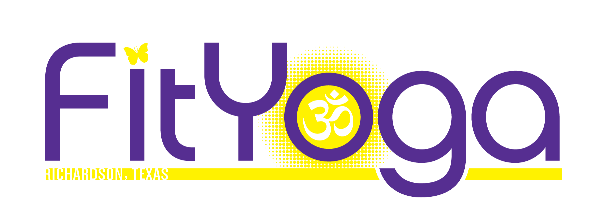What should I bring?
Fit Yoga provides all props, including mats. We highly recommend bringing your own yoga mat. – it’s more hygienic. Yoga Mats are available for rent for $1. Many practitioners bring a water bottle and small towel. There are no fees for use of studio props.
What should I wear?
Wear comfortable & stretchy exercise clothing that is not too baggy. We practice in our bare feet.
Is there a place to change and store my belongings?
Yes, bathrooms are available for changing and storage cubbies are available inside the studios for storing valuables. Please leave shoes outside the studio.
How much does it cost?
We offer a $65 for Unlimited Monthly Pass. If you would prefer to try just one class, the drop-in fee is $10. For ongoing members, we offer various passes to fit your budget and frequency of attendance…
What is a typical Fit Yoga class like?
No two classes are alike. Each teacher brings a unique background to his or her classes. In general, classes begin with a short meditation practice. During the class, the teacher will lead students through a variety of yoga poses, with directions for healthy alignment of the body. He or she will also offer breathing directions and moments of silence for self-inquiry.
Teachers may or may not play music. Some teachers are more conversational, with questions and answers as part of the class; other teachers are more formal and will assist individually while they walk through the class as they teach. Some classes are very slow and methodical and focus on a few specific poses, while others may flow and move through more poses with less emphasis on each pose.
The pace and intensity of the class will depend on the level and style of the class; some classes will focus more on relaxation, while others will give you a more physical workout. Please see our Instructor Bios and Class Descriptions to find the right class for you. Classes end with final relaxation and another short period of meditation.
What is a yoga pose?
A yoga pose is more than a position you take with the body. Sometimes they are called “postures.” The Sanskrit word for a yoga pose is asana [AH-suh-nuh]. Poses are designed to give the body and mind maximum benefit. What makes it a yoga pose is the way you do it, not the shape you take.
It’s officially a yoga pose when you are breathing consciously, have a balance of effort and ease, and are not competing with yourself or anyone else. (Darn, turns out it’s even harder than putting your foot behind your head! – that’s why we call yoga “a practice”.) A truly advanced yogi is one who honors his or her honest edge of sensation – a place that is neither too much nor too little – in any given moment.
What is Savasana?
The last pose to every class is a resting pose, in which you lie on your back on the mat and relax for anywhere from 5-10 minutes. The Sanskrit term for this pose is Savasana [sha-VAH-sah-na]. This pose is all about comfort and rest, so if lying on your back is not comfortable for you, let the teacher know! He or she will offer modifications.
A simple Savasana modification that you can do yourself is to place a blanket underneath your knees. This releases the low back and reduces discomfort.
I’m recovering from an injury. Will yoga help?
Yoga is a restorative practice and can often help the body to recover from injury. The practice may also compliment other physical activities and help prevent injury.
It’s always advisable to let the teacher know about any physical issues you may have before class so that they can offer you the individual support you may need. Although the teacher will provide you with educated options throughout the class, you are the one who makes the final call.
If something hurts or doesn’t feel right, don’t do it. The teacher will not be offended. We are all here to help you and an injury can be a great learning experience. Ask any teacher before or after classes if you need more information or even more personalized options.
Should I do yoga if it’s my “time of the month?”
It depends! Many yogis recommend that women refrain from inversions during the first three days of their menstrual cycle to avoid countering the natural downward flow of energy. These include headstands, shoulder stands, and handstands.
Our teachers often offer an alternative pose for those who aren’t doing inversions, but we leave this decision up to each woman’s personal discretion. Others recommend practicing only restorative or gentle yoga during your cycle to help build back the energy that goes into the process of menstruation. Listen to your body!
I’m pregnant. Should I stop my yoga practice?
No, but you’ll want to adapt it. Prenatal Yoga classes offer safe and beneficial practices for this important time. If you are pregnant and plan to take “regular” classes, please notify your teacher and listen to your body. Avoid poses on your belly and flat on your back. Modify twists to be open, not closed. Backbends should be gentle, not deep. Relaxation pose should be modified to avoid lying fully supine (both hips and shoulders on the floor) for an extended period of time.
Do I have to know a lot about Eastern spirituality in order to enjoy Fit Yoga?
No. Fit Yoga is dedicated to creating a friendly and welcoming space for the practice of yoga. Our teachers are knowledgeable about the origins and philosophy of yoga, as well as meditation and other aspects, but you do not have to be interested in these aspects of yoga to benefit from the practice.
We respect that all students practice yoga for their own personal reasons. Should you be interested, we offer many ways to deepen your understanding, including class themes, workshops and intensives.

